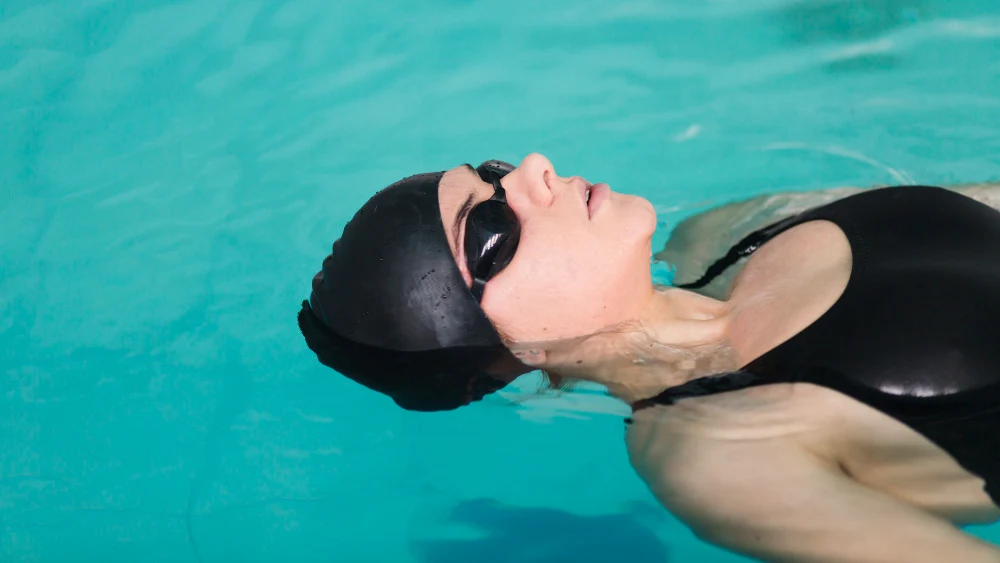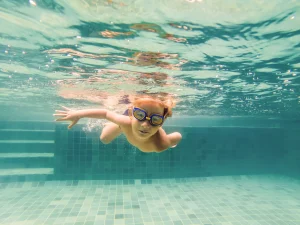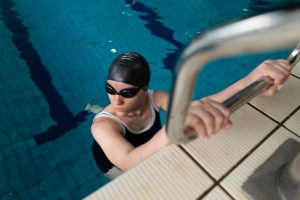From the beginner stage to professional level, swimming is a journey of learning and overcoming challenges. Much more than simply reaching the other side of the pool, each phase of the process involves specific hurdles and achievements.
Whether for those just starting out or for experienced athletes, there is always a common question: how can you tell if there has been progress in the sport?
Monitoring improvement during swimming lessons is essential for maintaining motivation, noticing results, and valuing each step of development.
That’s why it is important to learn how to measure your progress, what milestones can be set, and how regular practice together with instructor support contributes to achieving lasting results.
How to Measure Progress from Beginner to Professional?
When it comes to progress in swimming, many people believe it is measured by the ability to cover longer distances or reduce swimming time. However, there are different dimensions to assess sporting performance, such as:
- Breath control: learning to exhale underwater and coordinate breathing rhythm with movements;
- Confidence in the water: feeling safe while floating, diving, or staying at different depths;
- Technical efficiency: being able to execute movements in a coordinated way without unnecessary effort;
- Stamina and physical conditioning: swimming for longer or at higher intensity without early fatigue;
- Versatility in strokes: progressing from mastering basic front crawl and backstroke to learning breaststroke and butterfly.

Setting Achievable Aquatic Milestones
To make improvements clearer, it is important to divide the journey into well-defined stages. In swimming, these milestones act as reference points that guide learning.
They also turn learning into a motivating experience, where each small victory boosts confidence and fuels the will to keep evolving continuously.
Progress from beginner to professional can be observed in:
- Beginners: putting the face in the water without fear, learning to glide with support from the pool wall, or maintaining back float;
- Intermediate swimmers: swimming 25 to 50 metres non-stop, mastering front crawl with side breathing, and practising basic turns;
- Advanced swimmers: refining technique in all four strokes, working on competitive starts and turns, and achieving specific times in timed training sessions.
The Importance of Consistent Practice
In this sport, regularity is just as important as training quality. The body needs repetition to develop muscle memory, refine movements, and build endurance.
Even those who swim purely for leisure notice differences when they maintain a regular routine. For example, a student who swims twice a week, within a few weeks, finds it easier to move through the water and control their breathing.
It is normal for progress to seem slow at times. But, as with any other skill, small improvements accumulated over time generate significant advances.
That is why it is important not to lose heart in phases where progress seems slower.
Recognising Progress in Swimming Practice
Like any skill in development, it takes time to master specific techniques. To notice how much progress you’ve made, some strategies are highly effective:
- Track your improvements: record times, distances, or techniques learnt;
- Celebrate small victories: value simple achievements, such as swimming longer without stopping or improving coordination;
- Vary training: alternate strokes, include water games, and try different challenges to make lessons more dynamic;
- Join aquatic events or festivals: these are great opportunities to put learning into practice and gain extra motivation.

The Role of Instructors in Monitoring Progress
As an individual sport, of course, each swimmer’s dedication is key to their progress. However, guidance from a swimming instructor makes the process more efficient, safer, and often quicker.
A qualified personal instructor can support your development at different stages and enhance performance by:
- spotting technical details you might not notice yourself;
- suggesting specific drills to correct movements;
- adjusting lesson intensity to suit your abilities;
- offering continuous feedback, pointing out strengths and areas for improvement.
To demonstrate your progress in technique and stamina, Easy2Swim instructors use periodic assessments and visual tools such as video recordings. Many swimmers only realise how much they have improved when they watch their own performances.
From First Contact to Advanced Level
Each swimmer progresses at their own pace. Some advance faster in technique, others in endurance — and this is completely natural.
The key is to understand that progress goes beyond speed or competition. It’s about gaining autonomy in the water, building discipline, confidence, and enjoyment of practice.
From the beginner learning to float to the advanced swimmer seeking refinement, every stage of the journey is valuable.
Undoubtedly, progress in swimming lessons is built through regularity and dedication.
Setting achievable milestones, celebrating small victories, and relying on the guidance of Easy2Swim instructors helps maintain motivation and ensures consistent progress.
Begin your journey in the sport today: talk to our instructors and book a private lesson now.






